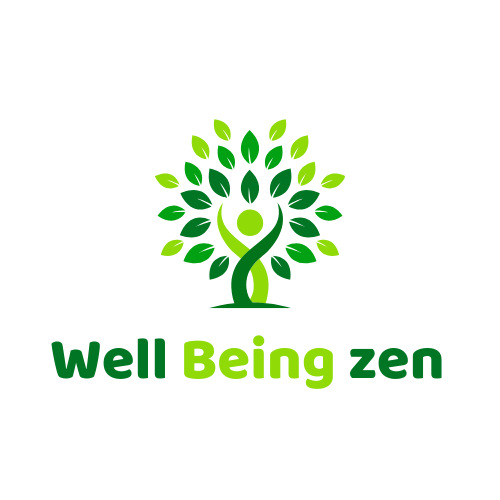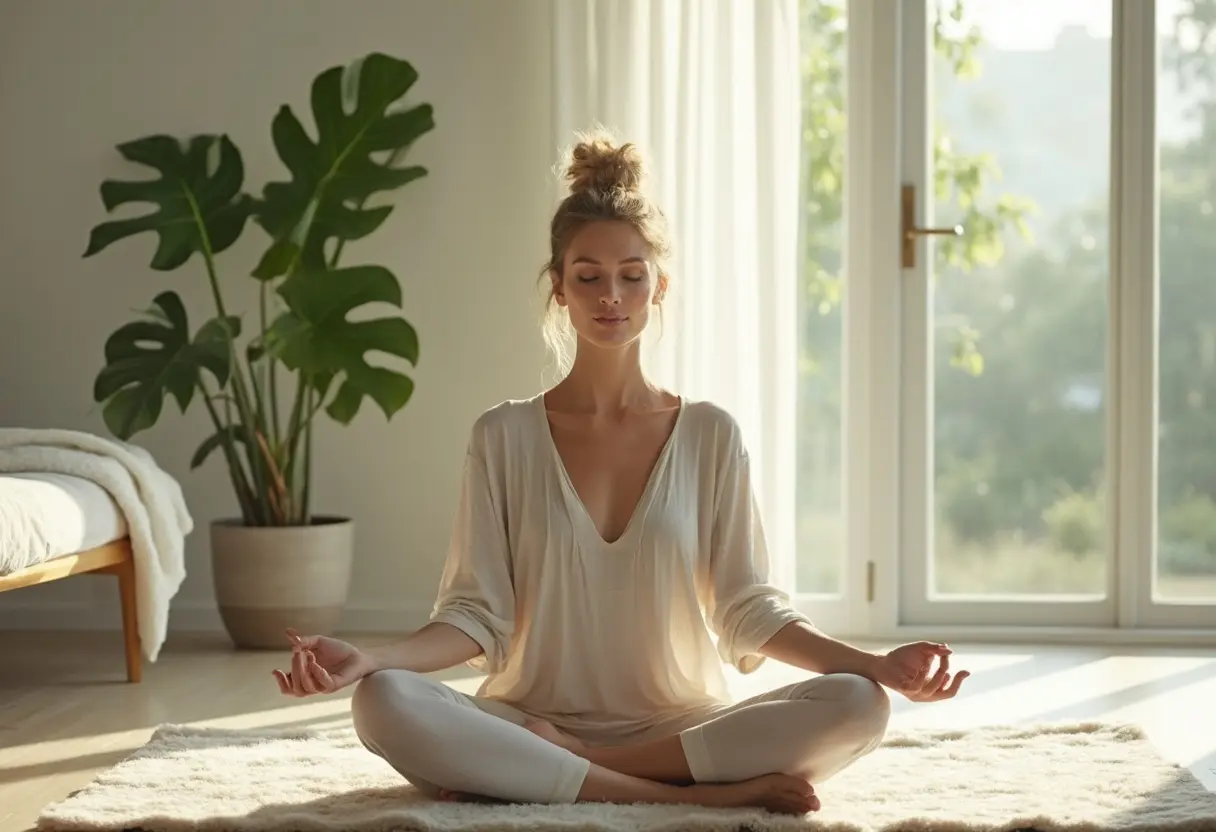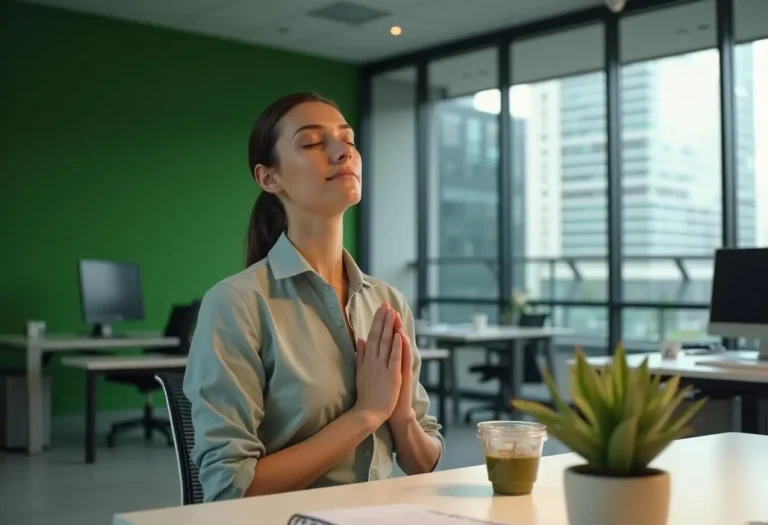Learning the benefits and proper method of practicing meditation can be the most transformative and loving gift you ever give to your mind. As the world outside your window in Pune sleeps, does your inner world feel louder than ever? In the quiet of the night, the endless chatter of thoughts—worries about tomorrow, replays of yesterday—can feel like a storm with no escape. We long for a switch to turn it all off, just for a moment.
What if I told you that you already have that switch? It’s not about forcing your mind to be silent, but about gently learning to find the stillness that already exists beneath the noise. This is the practice of meditation, or Dhyana, an ancient art that is not nearly as complicated or mystical as it may seem.
Forget any images of needing to sit for hours in a complex posture. Meditation is a simple, practical skill for training your awareness. It’s an act of coming home to yourself. Let’s gently demystify this life-changing practice together.
Table of Contents
What is Meditation, Really? (It’s Simpler Than You Think)
The biggest myth about meditation is that you have to “empty your mind” or “stop thinking.” This is impossible! The mind’s job is to think, just as the heart’s job is to beat.
Meditation is simply the practice of paying attention to the present moment on purpose, without judgment.
Imagine you are sitting on the bank of a river. The water is the flow of your thoughts. You don’t try to stop the river. You don’t jump into the river and get swept away. You simply sit, and you watch the river flow. Sometimes the river is calm, sometimes it’s turbulent. Your practice is just to sit and observe, without getting carried away. This is the essence of meditation.
The Proper Method of Practicing Meditation: A Beginner’s Guide
This is where we get practical. Learning how to practice meditation is like learning any new skill—it requires a little guidance and a lot of kindness towards yourself.
1. Find a Quiet Space and a Comfortable Seat
You don’t need a special room. Just find a spot where you won’t be disturbed for a few minutes. You can sit on a cushion on the floor or, just as effectively, sit on a chair. The key is to keep your spine relatively straight but not rigid, allowing energy to flow. Let your hands rest comfortably on your lap.
2. Set a Timer (Start Small!)
This is crucial for beginners. The thought of meditating for 30 minutes is daunting. So don’t. Start with just three to five minutes. Committing to a short, achievable goal makes it much more likely that you’ll stick with it.
3. Choose a Gentle “Anchor”
An anchor is simply a point of focus for your awareness. The easiest and most common anchor is your breath. Don’t try to change your breathing; just notice it.
- Feel the sensation of the air entering your nostrils.
- Notice the gentle rise and fall of your chest or belly.
- Simply rest your attention on this natural rhythm.
4. The Practice: Notice, Acknowledge, and Gently Return
Here is the core of the practice:
- Focus: Gently place your attention on your anchor (your breath).
- Mind Wanders: Within seconds, your mind will wander. It will think about your to-do list, a noise outside, or what to have for breakfast. This is not a failure! This is a normal part of the process.
- The Magic Moment: The moment you notice your mind has wandered is a moment of mindfulness.
- Gently Return: Without any self-criticism or frustration, gently and kindly guide your attention back to your anchor.
That’s it. The entire practice is this simple loop. Every time you notice your mind has wandered and you gently bring it back, you have just done one “rep” of a bicep curl for your brain. This is how you build your focus and awareness muscle.
5. End with Kindness
When your timer goes off, don’t just jump up. Take a moment to gently bring your awareness back to the room. Notice the sounds around you. Wiggle your fingers and toes. Thank yourself for taking this time.
Unlocking Your Potential: 7 Key Benefits of Practicing Meditation
So why do we practice this simple, repetitive act? The list of scientifically-backed benefits of practicing meditation is extensive and life-changing.
- Reduces Stress and Anxiety: This is the most famous benefit. Meditation helps to lower levels of the stress hormone cortisol, calming your nervous system and reducing the “fight-or-flight” response that keeps you feeling on edge.
- Improves Focus and Concentration: By repeatedly training your brain to return its focus to the breath, you are literally strengthening your attention span. This improved focus will spill over into all areas of your life.
- Enhances Self-Awareness: Meditation helps you to understand your own thought patterns. You learn to observe your thoughts and feelings without getting entangled in them, giving you a greater sense of inner control and understanding.
- Promotes Emotional Health and Resilience: The practice creates a “pause” button between a trigger and your reaction. Instead of reacting impulsively, you have a moment of space to choose a more thoughtful response, leading to greater emotional stability.
- Improves Sleep Quality: For anyone reading this in the middle of the night, this is key. Meditation helps to quiet the mental chatter that often causes insomnia, allowing your body and mind to relax into a deeper, more restorative sleep.
- Can Lower Blood Pressure: The deep state of relaxation achieved during meditation has been shown to have physical benefits, including helping to lower high blood pressure over time.
- Cultivates Kindness and Compassion: The non-judgmental attitude you practice towards your own thoughts naturally begins to extend outwards. You may find yourself becoming more patient and compassionate with yourself and with others.
Conclusion: Your Inner Sanctuary Awaits
The goal of meditation is not to silence your mind, but to find the silence within your mind. It’s about changing your relationship with your thoughts, so they no longer control you. The profound peace, clarity, and resilience you seek are not in some far-off destination; they are already within you, waiting beneath the surface of the noise.
You don’t have to wait for the perfect moment. The benefits of practicing meditation are available to you right now. After you finish reading this, why not set a timer for just three minutes? Close your eyes. Notice your breath. And gently, kindly, come home to yourself.
Have you started your meditation journey? Share one thing that surprised you about the practice in the comments below. We’d love to hear from you.




